-
CATEGORY ::
- All Seeds /
- All Flower Seeds /
- All Poppy Seeds






Poppy Seeds - Orientale Orange-Scarlet
SEASON
Perennial
USDA ZONES
2 - 7
HEIGHT
36 inches
BLOOM SEASON
Spring and summer
BLOOM COLOR
Orange-scarlet
ENVIRONMENT
Full sun
SOIL TYPE
Well-drained, pH 5.8 - 6.8
DEER RESISTANT
Yes
SEEDS PER POUND
3,400,000
SEASON
Annual
USDA ZONES
3 - 9
HEIGHT
12 - 15 inches
BLOOM SEASON
Summer
BLOOM COLOR
Red
ENVIRONMENT
Full sun
SOIL TYPE
Loose, well-drained, pH 6.1 - 7.3
DEER RESISTANT
Yes
SEASON
Perennial
USDA ZONES
4 - 9
HEIGHT
24 - 36 inches
BLOOM SEASON
Late spring through early summer
BLOOM COLOR
Black and white
ENVIRONMENT
Full sun
SOIL TYPE
Well drained soil, pH 5.5 - 7.5
DEER RESISTANT
Yes
SEASON
Perennial
USDA ZONES
3 - 8
HEIGHT
12 inches
BLOOM SEASON
Mid spring to early summer
BLOOM COLOR
Orange
ENVIRONMENT
Full sun
SOIL TYPE
Loose, well-drained, pH 6.1 - 7.3
DEER RESISTANT
Yes
SEASON
Annual
USDA ZONES
3 - 10
HEIGHT
10 - 12 inches
BLOOM SEASON
Mid spring to late summer
BLOOM COLOR
Mix
ENVIRONMENT
Full sun
SOIL TYPE
Prefers gritty, fast-draining conditions, pH 6.6 - 7.5
DEER RESISTANT
Yes
SEASON
Annual
USDA ZONES
3 - 10
HEIGHT
12 inches
BLOOM SEASON
Mid spring to late summer
BLOOM COLOR
Pink
ENVIRONMENT
Full sun
SOIL TYPE
Prefers gritty, fast-draining conditions, pH 6.6 - 7.5
DEER RESISTANT
Yes
SEASON
Annual
USDA ZONES
3 - 10
HEIGHT
10 inches
BLOOM SEASON
Mid spring to late summer
BLOOM COLOR
Yellow
ENVIRONMENT
Full sun
SOIL TYPE
Prefers gritty, fast-draining conditions, pH 6.6 - 7.5
DEER RESISTANT
Yes
SEASON
Annual
USDA ZONES
3 - 10
HEIGHT
10 inches
BLOOM SEASON
Mid spring to late summer
BLOOM COLOR
White
ENVIRONMENT
Full sun
SOIL TYPE
Prefers gritty, fast-draining conditions, pH 6.6 - 7.5
DEER RESISTANT
Yes
About...
Oriental Poppy (Papaver Orientale Orange-scarlet) - Easy-to-grow from Oriental Poppy seeds, no border should be without an incredible display of these intensely colored blooms. Orange scarlet blooms with a black eye add an exotic feeling to any sunny flower garden. The hairy foliage emerges early in the spring, and the Oriental Poppy plants quickly reach maturity.
MORE POPPY OPTIONS
Planting Directions
TEMPERATURE
68F
AVERAGE GERM TIME
14 - 21 days
LIGHT REQUIRED
Yes
DEPTH
Do not cover the seed but press into the soil
SOWING RATE
4 seeds per plant
MOISTURE
Keep seeds moist until germination
PLANT SPACING
18 inches
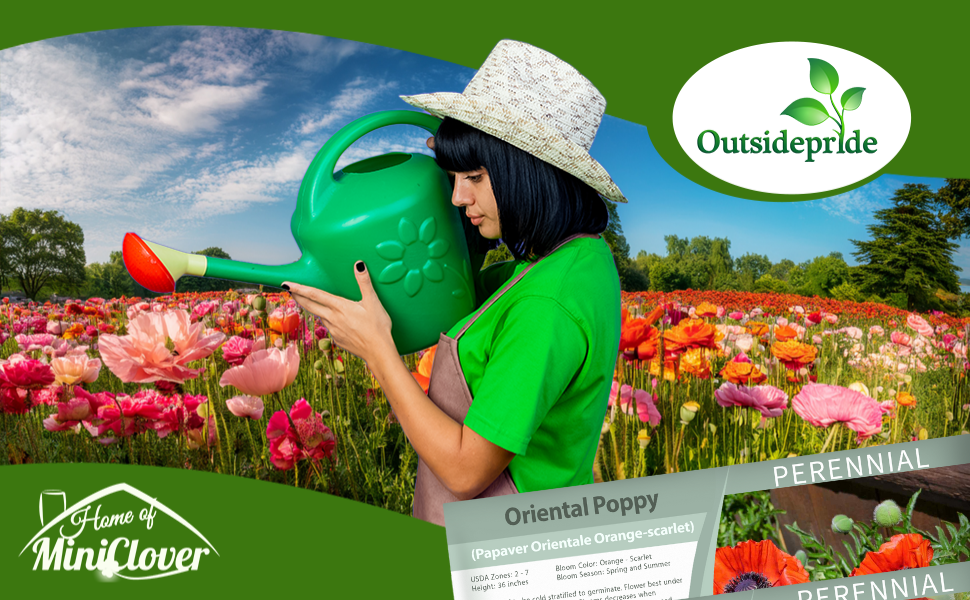
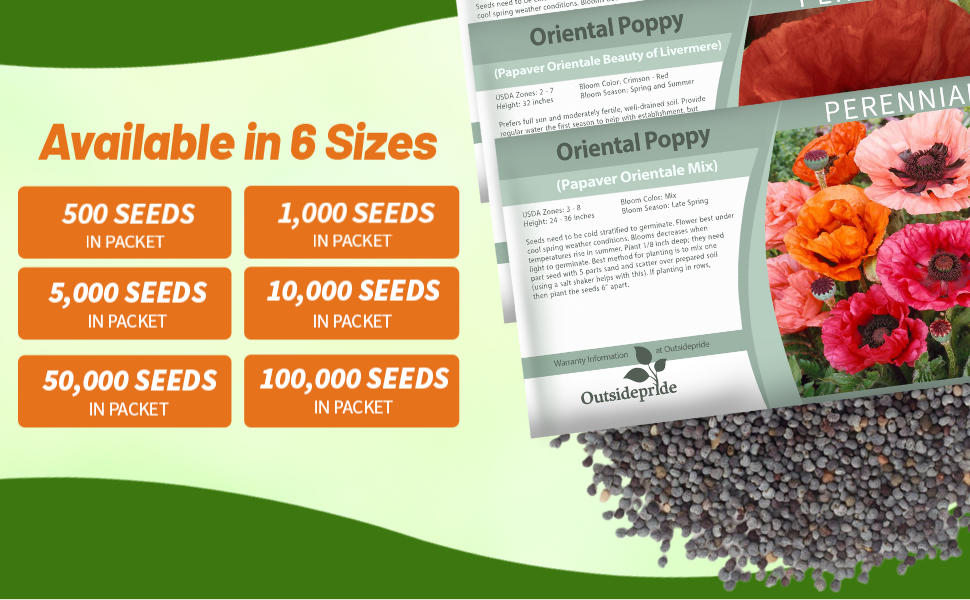
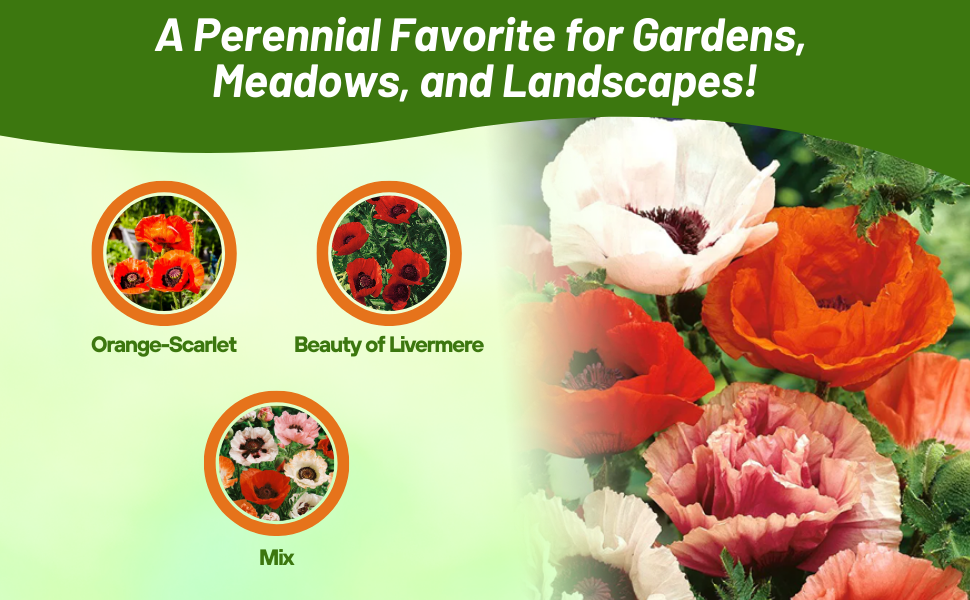
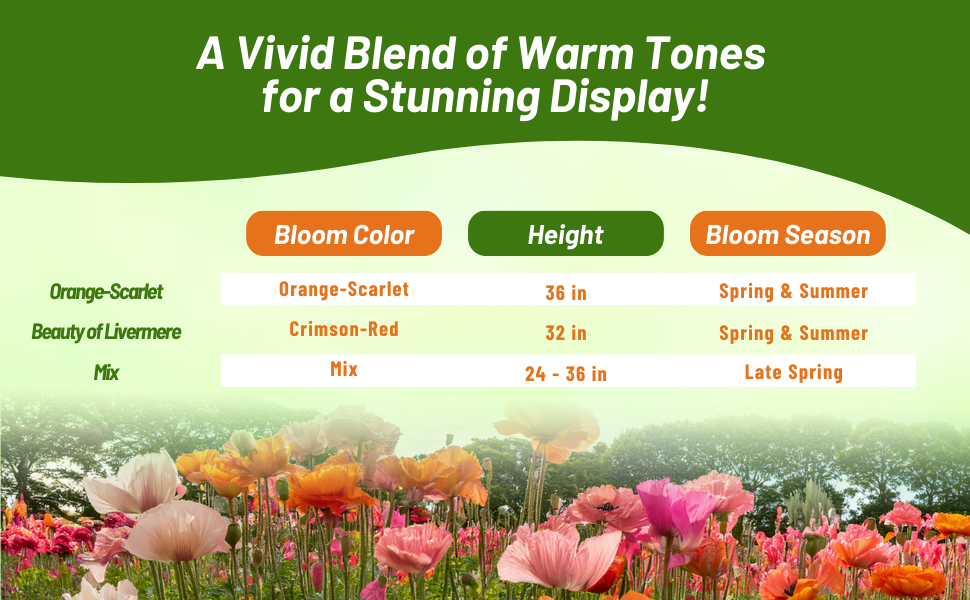
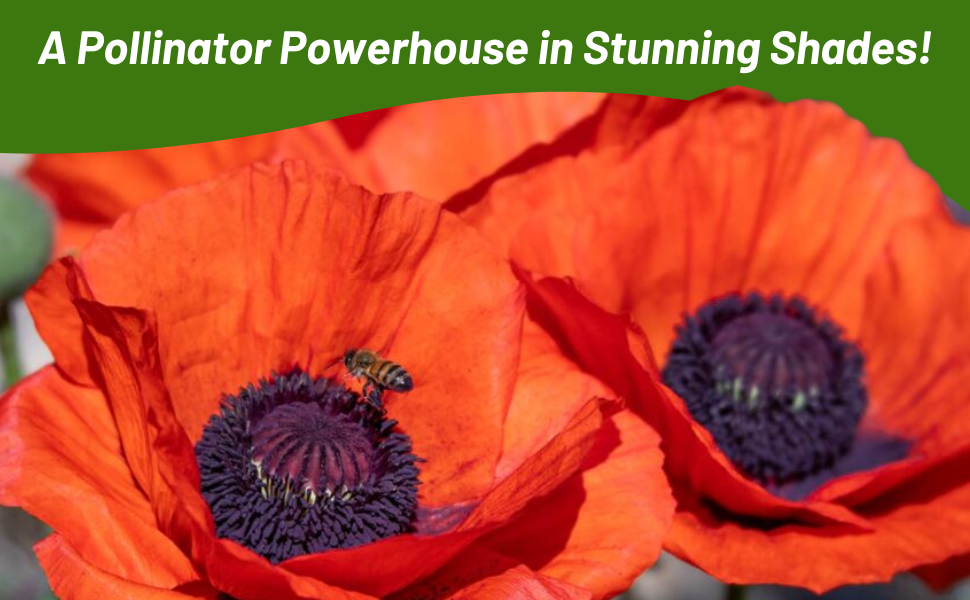
Oriental Poppy (Papaver Orientale Orange-scarlet) - Easy-to-grow from Oriental Poppy seeds, no border should be without an incredible display of these intensely colored blooms. Orange scarlet blooms with a black eye add an exotic feeling to any sunny flower garden. The hairy foliage emerges early in the spring, and the Oriental Poppy plants quickly reach maturity. Papaver orientale will go dormant after it blooms, so plant Poppies among later emerging sun-loving, sprawling perennials that will fill the space. Oriental Poppies prefer full sun and moderately fertile, well-drained soil, and they attract bees, butterflies and hummingbirds.































